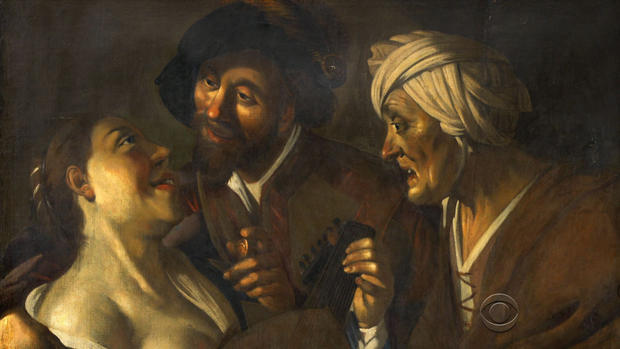Masterpieces of deception: Some fake art worth real money
SPRINGFIELD, Mass. -- The crate arriving from a London museum holds one of the star paintings in a new exhibit at the D'Amour Museum in Springfield. Curator Colette Loll makes sure it's given the white-glove treatment.
It's a fake.
"But it's a very important fake," Loll stresses.
It's a copy of a 1622 Dutch masterpiece, "The Procuress," executed in the 1940s by notorious forger Han Van Meegeren.
"Just because it's a fake doesn't mean it's not valuable," Loll says. "Socially and culturally, it's very valuable."
Van Meegeren sold a fake Vermeer to Nazi leader Hermann Goering during World War II. Convicted of forgery, he became a folk hero.
Loll, an art fraud expert, says the exhibition, "Intent to Deceive," is all about masterpieces of deception.
One forgery -- meaning not an exact copy, but a painting in the style of the Italian master Modigliani -- was actually painted by Hungarian forger Elmyr de Hory.
"I don't feel bad for Modigliani, I feel good for me," de Hory once said.
De Hory, who had trouble selling his own works, slipped hundreds of forgeries onto the art market in the 1950s and 1960s.
"I never offered a painting or a drawing to a museum who didn't buy it," he said. "They never refused one -- never."
Asked whether there was a common personality among the forgers, Loll says, "Some of them were incredible artists, but all of them were really good con men."
Their forgeries raise uncomfortable questions about what really is art -- and the experts' ability to judge who's the con man.
Loll says the forgers have developed their own sort of fame.
"And their own notoriety," she adds. "And with notoriety comes value."
De Hory's phony Modiglianis sell today for tens of thousands of dollars. As a forger once said, "If my work hangs in a museum long enough, it becomes real."


